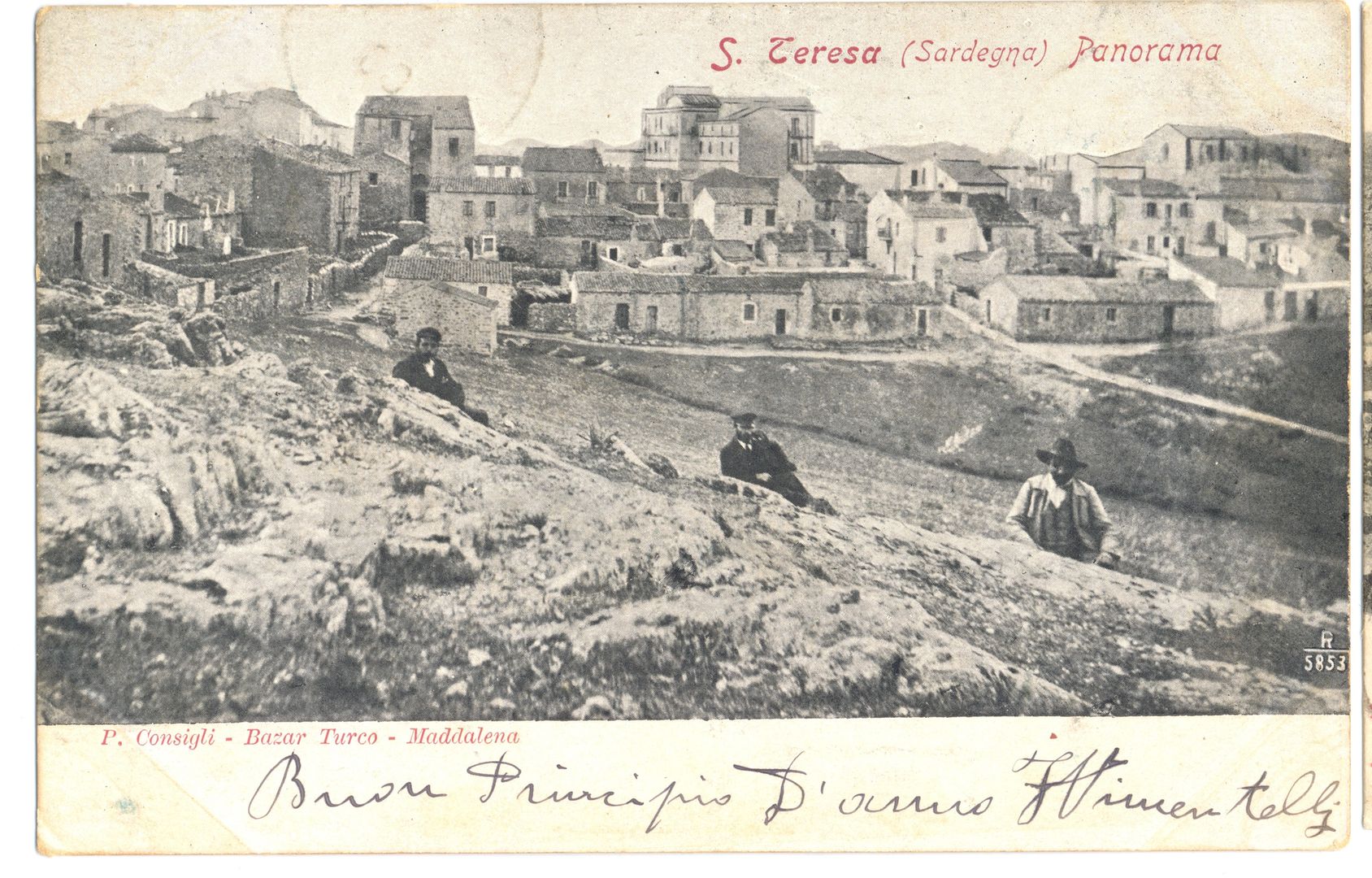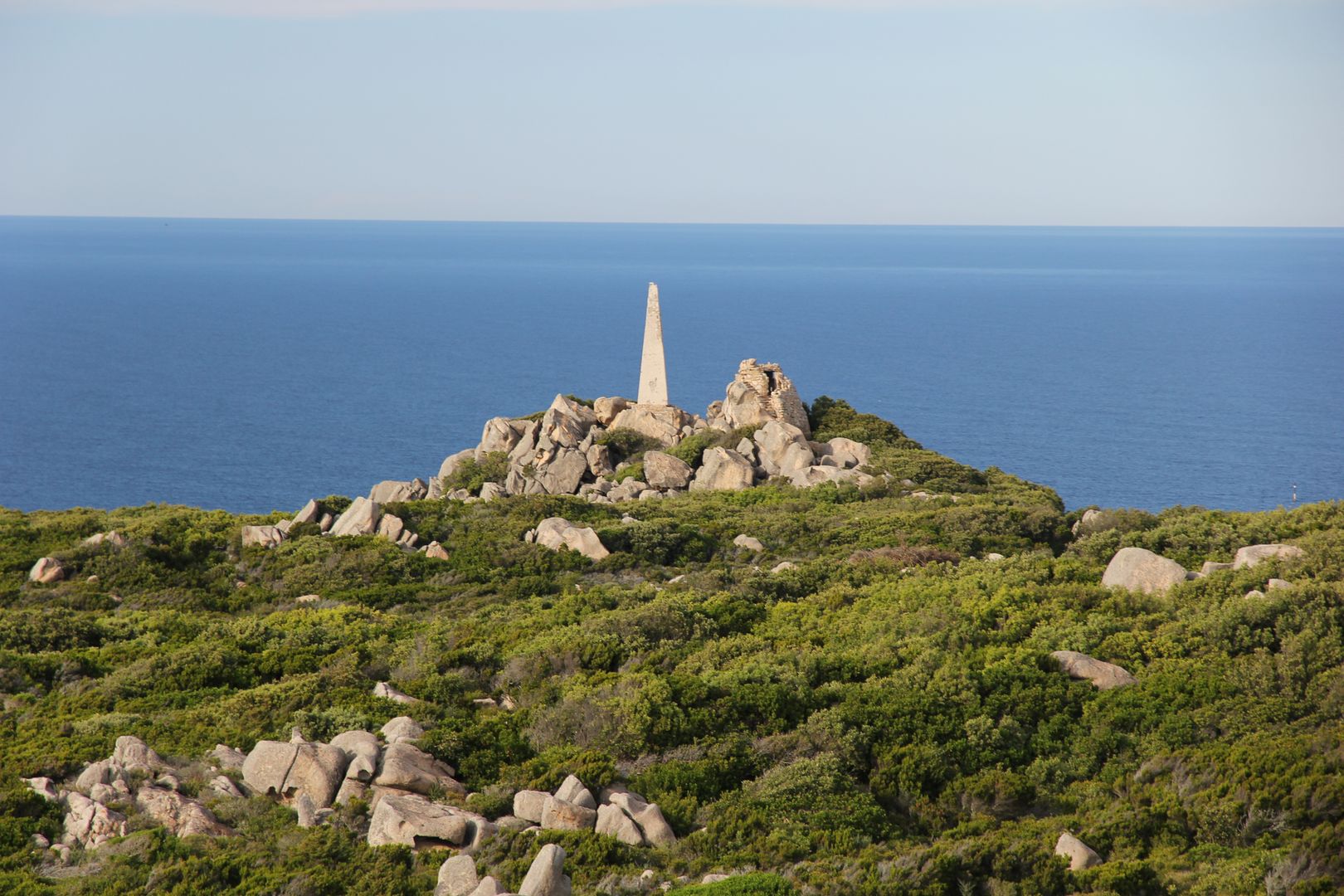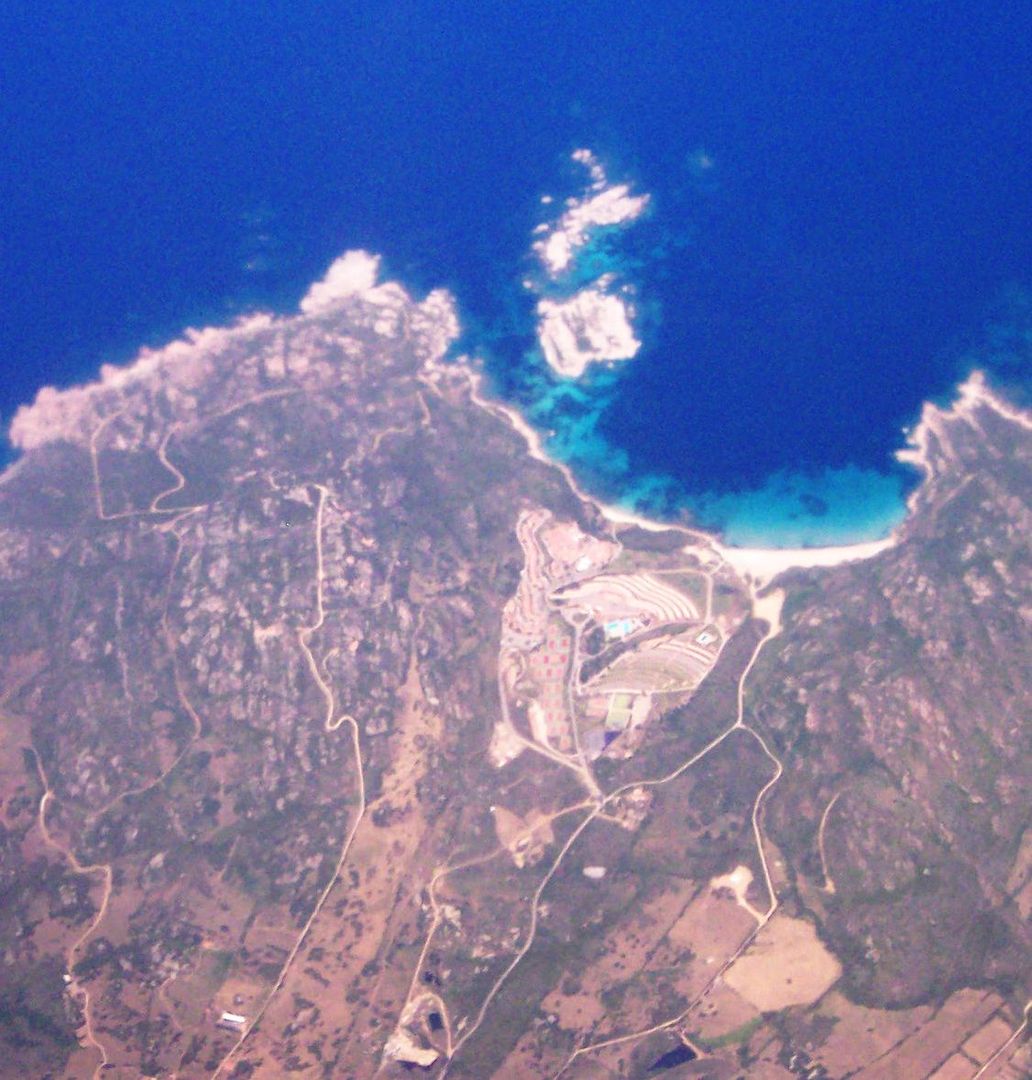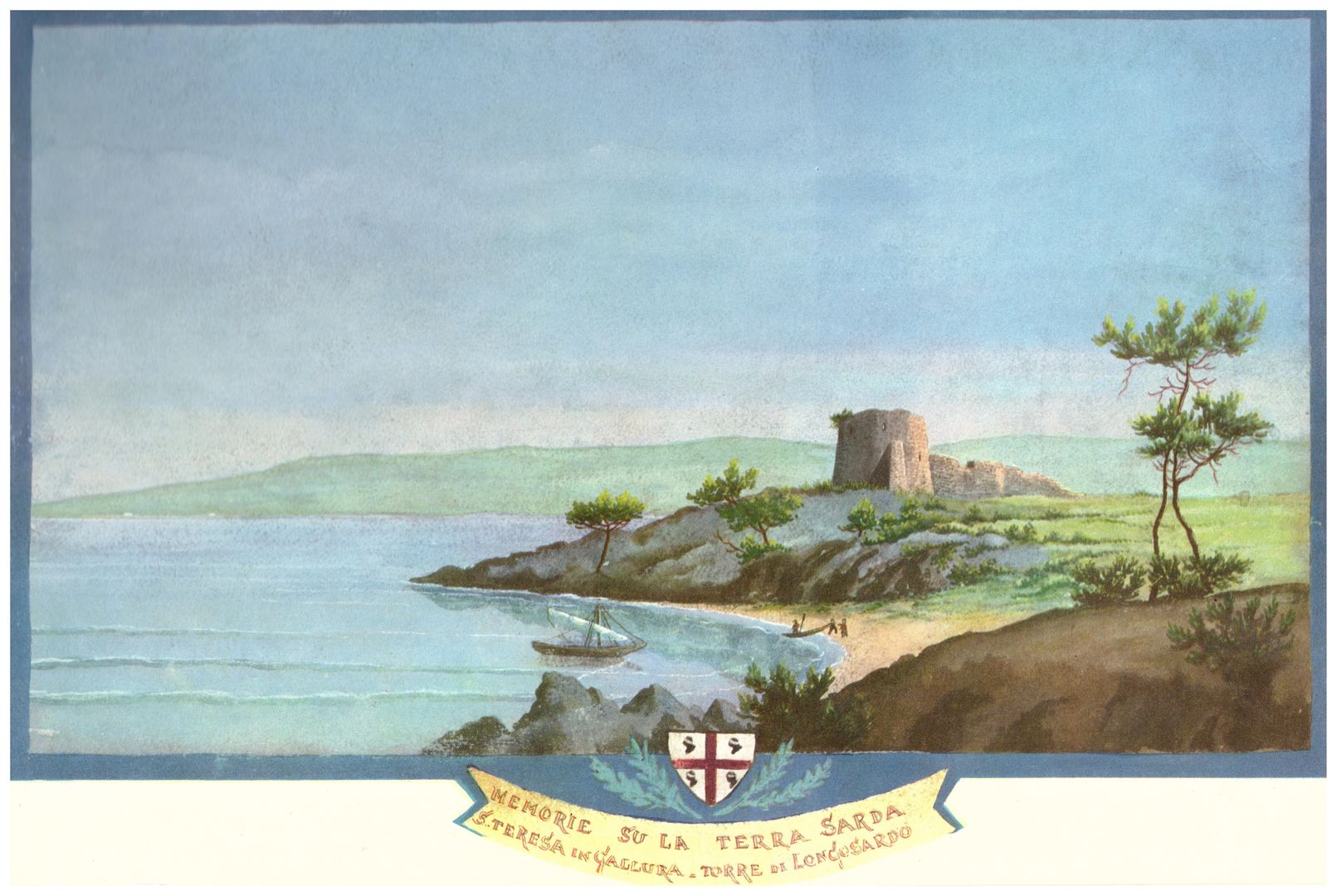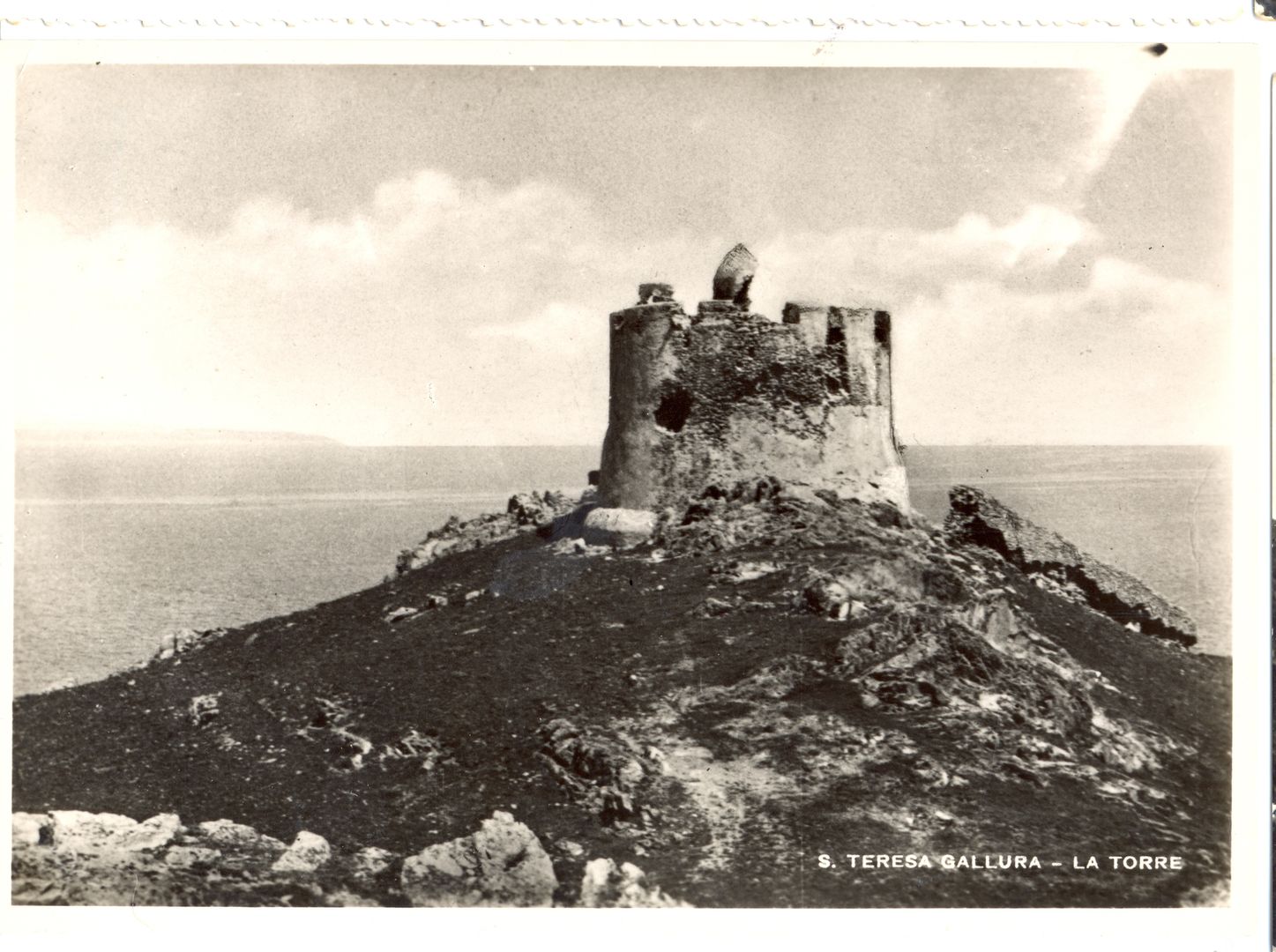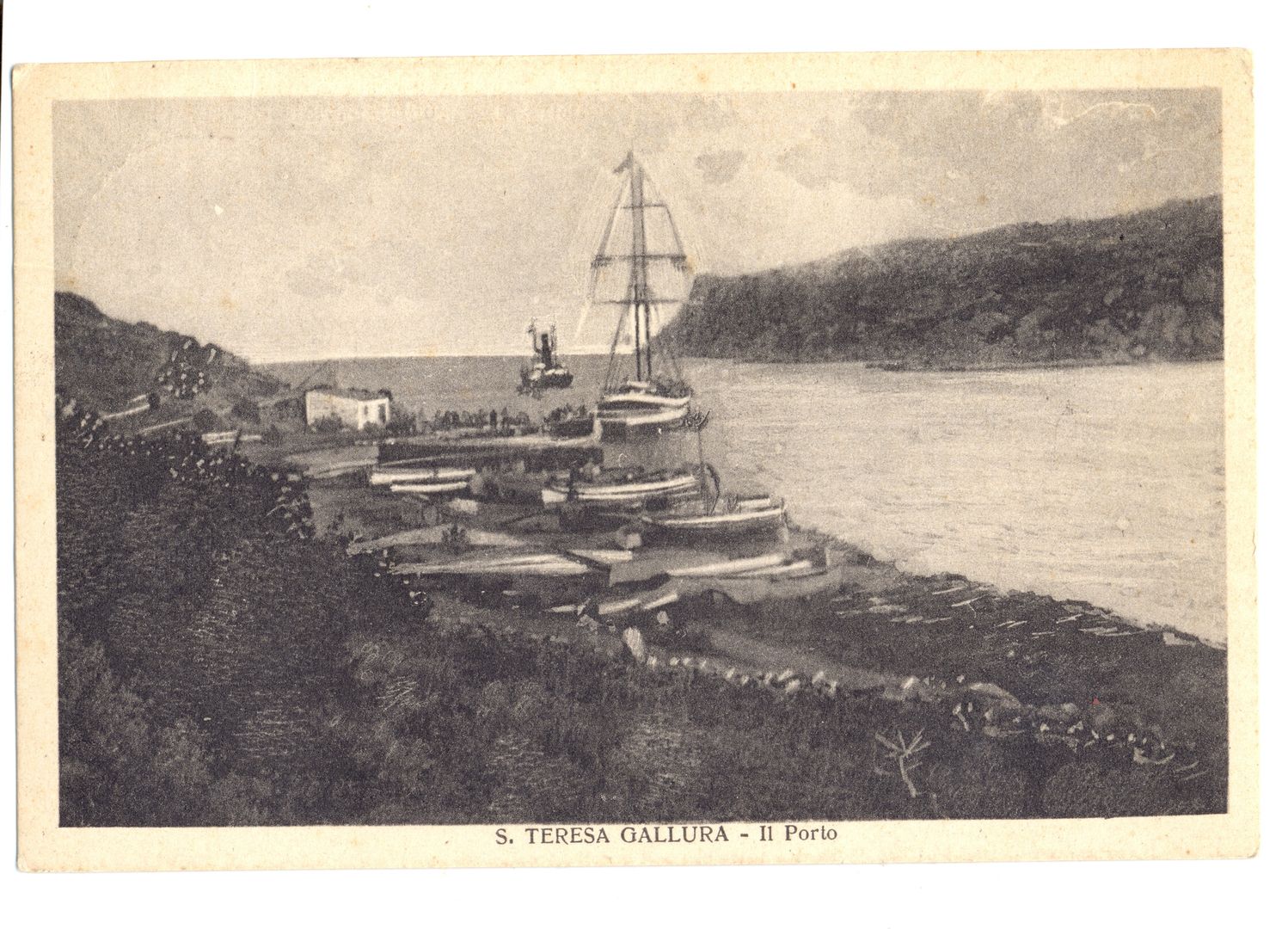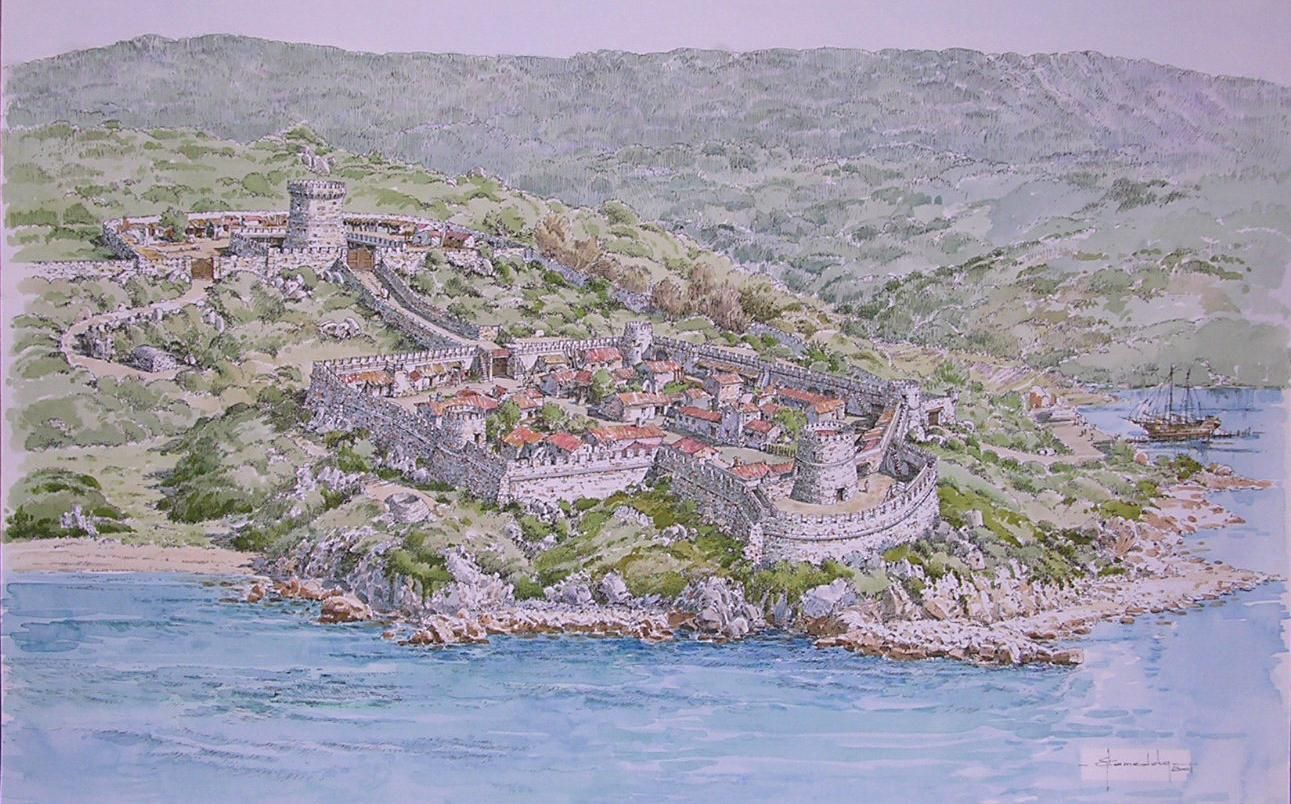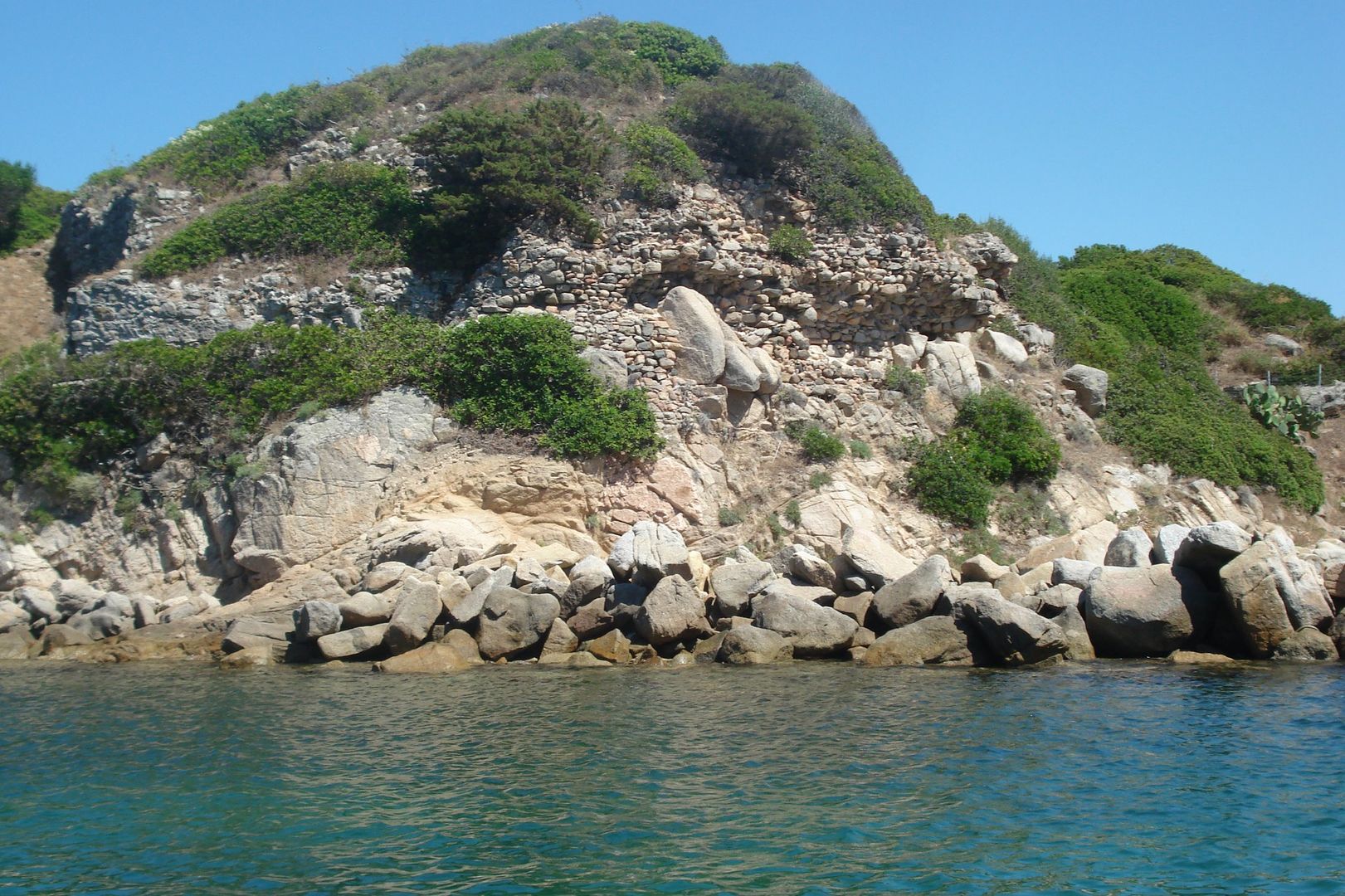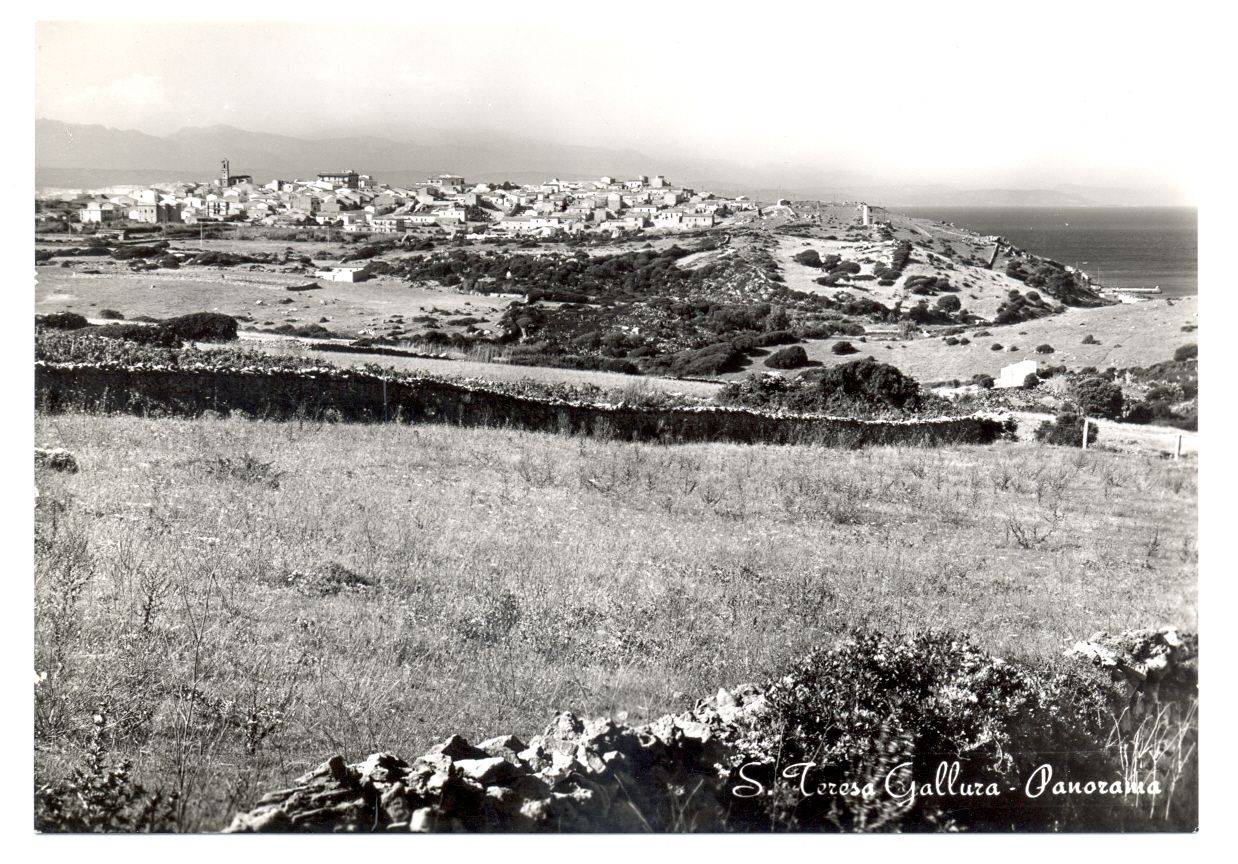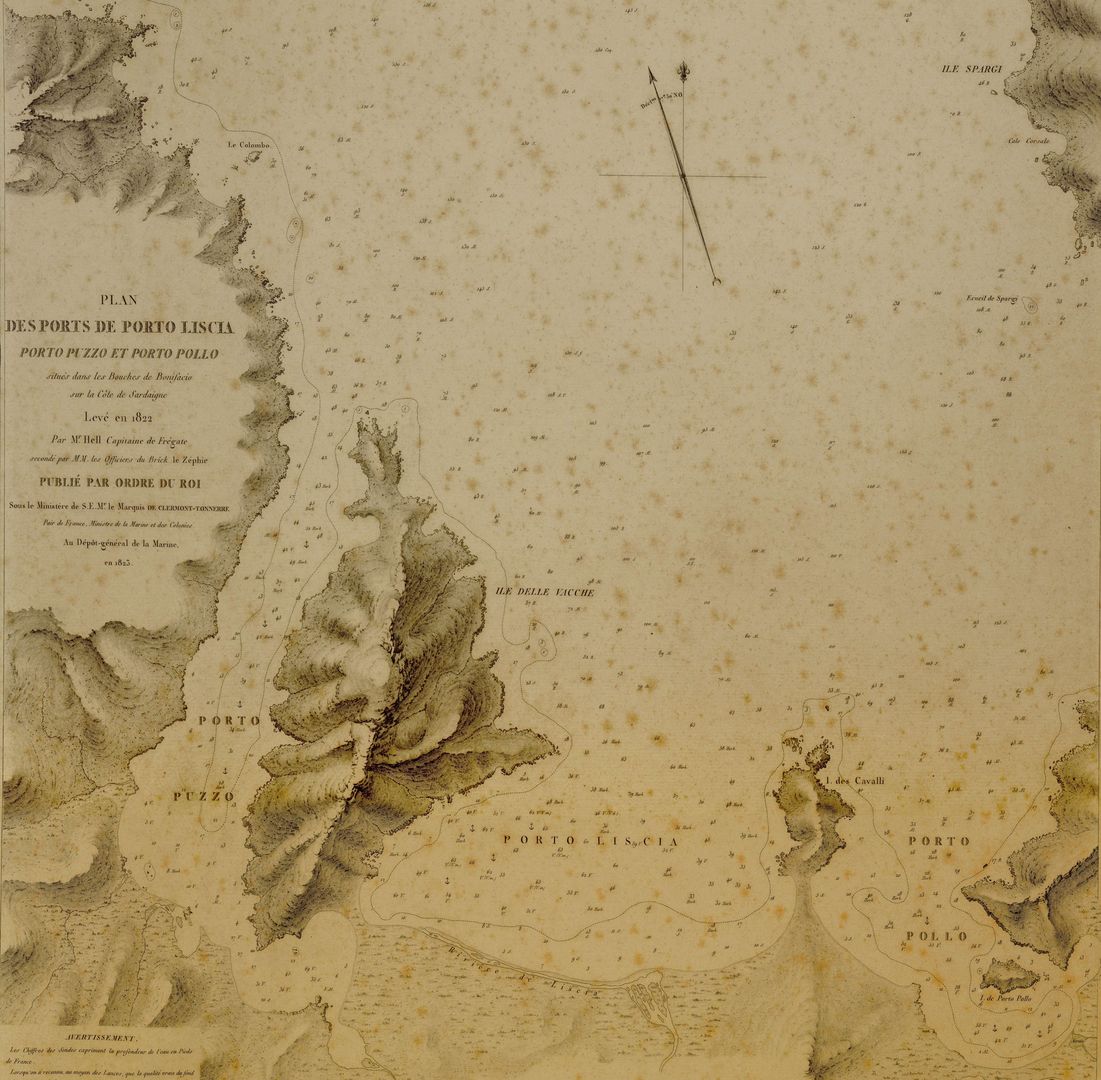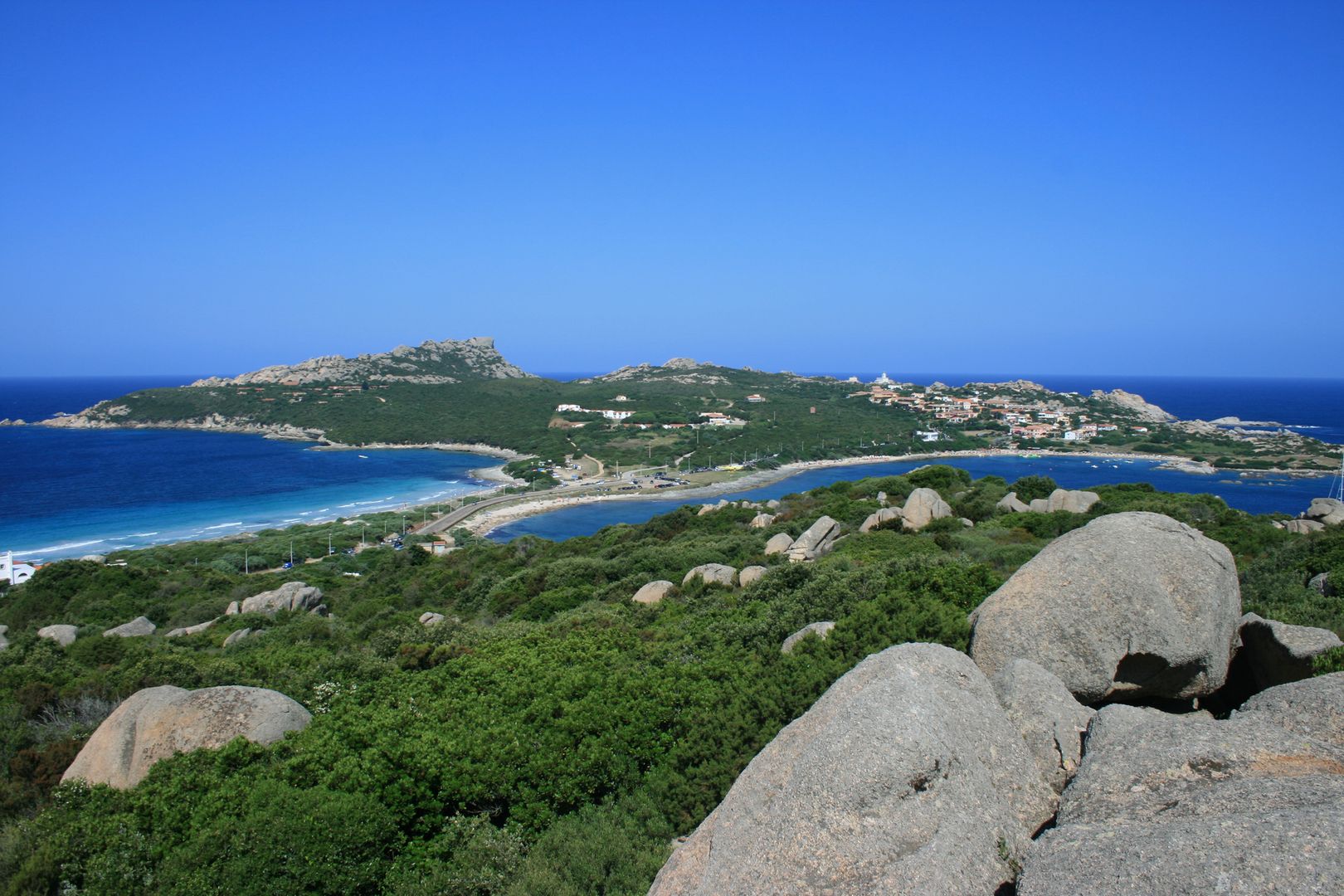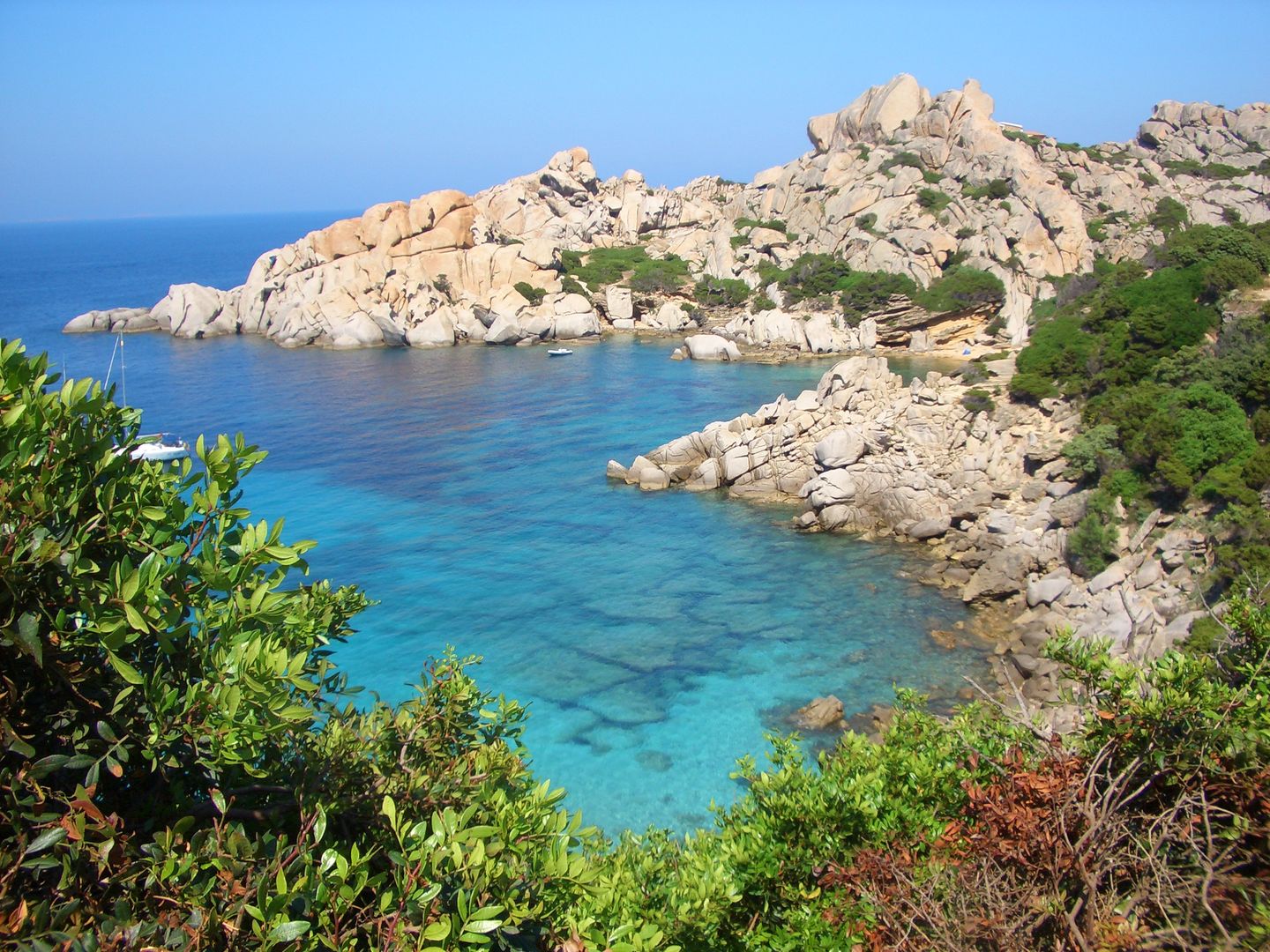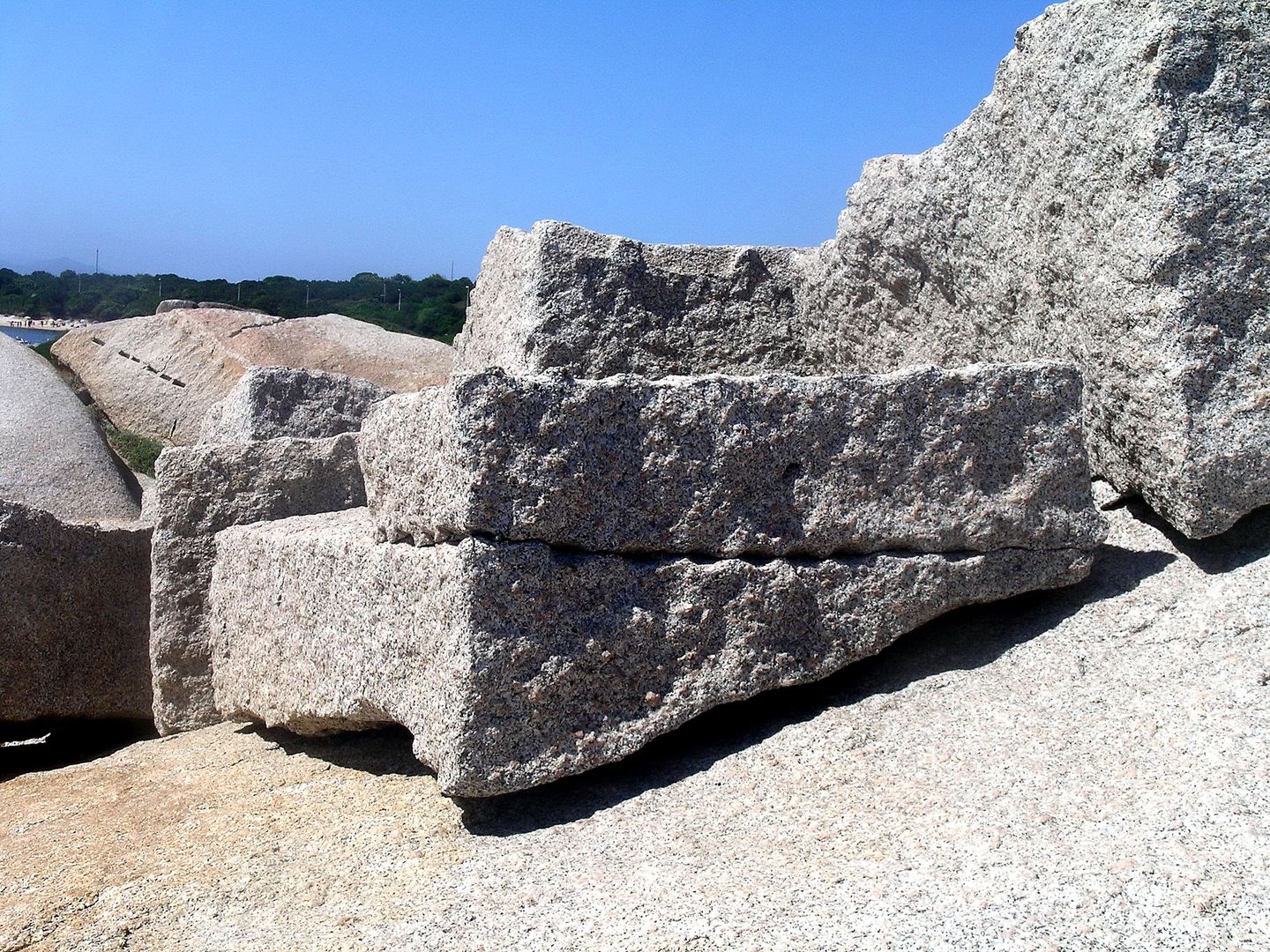SANTA TERESA
Sketch of the present state of the Island of Sardinia⇒
London 1828
John Murray, Albermarle-Street
in italian: ![]()
On a point on the east side are ruins of the fort and walls of Longonas, a Pisan town, destroyed by the Arragonese: it is thought by some to have been the Plubium of the ancients; but I found nothing indicating this as the identical spot, though, by inference, it must have been somewhere in the neighbourhood.
This cape was the Erebantium Promontorium of Ptolemy, and its western face is composed of strongly marked rugged cliffs, with several rocks above water, at its base, but nevertheless of deep approach.
On the north point is a cove, called Cala Spinosa, and near it are some quarries where fine granular stone may be obtained, and whence the columns were taken for the Pantheon at Rome, that most admirable specimen of ancient taste. Fifty or sixty large shafts, intended for columns and pilasters, with parts of a sarcophagus, were moved towards the beach, for exportation, and are still lying near the chapel of Santa Reparata.
In this incorrect production, the following note is placed near the centre of Gallura: “Icy se voyent les matrices des colonnes du Pantheon”, but how, from such an inland spot, the enormous masses were got down to the sea side, it would be difficult to explain.
SOURCES OF ILLUSTRATIONS
19th Century Paintings, Drawings, Maps and Lithographs
Philippine La Marmora, Santa Teresa, ca 1854-1856, IN Luigi Piloni, Memorie sulla terra sarda: tempere inedite di Philippine de la Marmora (1854-1856), Cagliari, Fossataro, 1964.
Map of Porto Liscia, IN Ports situés dans les Bouches de Bonifacio, 1823, from www.sardegnadigitallibrary.it
Postcards and Photos, Late 19th/Early 20th Century
Collection of the Historical Archive of Santa Teresa
Contemporary Photos
Gianni Careddu – CC BY-SA 3.0 wikimedia commons, GNU wikimedia commons, Rosanna Guspini, pattyvi – Flickr, Steffi Franco, CC BY-ND 2.0 – Flickr, Gianfranco Galleri – wikimapia CC-BY-SA.

